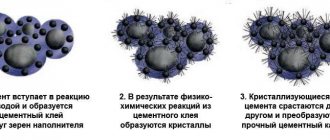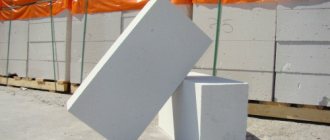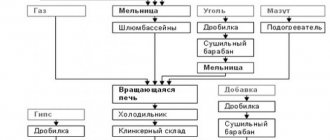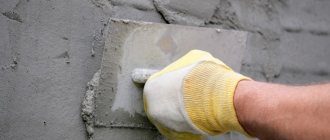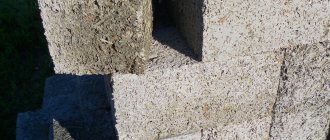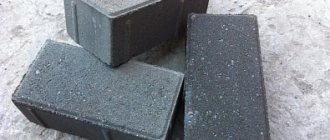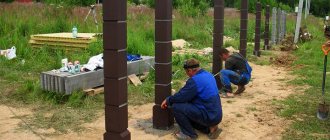Cement. Photo Axon
to carry out any construction work without the use of a universal material - cement of various types and brands, which is used for the preparation of concrete mortars, masonry and plaster mixtures, and in the production of reinforced concrete products. Cement is successfully used to solve decorative problems . Crafts and figurines made from cement are used for interesting and non-standard interior design and local areas. Cement is such a familiar material that many people do not think about the question - how is it produced ?
Manufacture, from what: cement clinker, what it is and other components
Cement is produced by finely grinding clinker and gypsum . Clinker is an intermediate product of cement production , obtained by uniformly firing before sintering a raw mixture of limestone and clay . The raw mixture is fired at temperatures up to +1500 degrees for 2-4 hours . When clinker is crushed, additives are added : gypsum to regulate the setting time, active mineral additives, the volume of which does not exceed 15%, to improve the individual properties of the finished product.
Cement. Photo Eurocement Group
During the manufacturing process, it is possible to use other additives, in particular, oxides of calcium, phosphorus, magnesium, and salts. They are present in the composition in small quantities. Their introduction makes it possible to obtain cement with certain characteristics: acid resistance, heat resistance and others. Depending on the amount of additives, several types of cement are distinguished.
Composition of Portland cement and other types
Portland cement is the most common modification. When providing general information about cement, manufacturers, suppliers and various sources refer specifically to Portland cement. The material is obtained by sintering a raw mixture of clay (22-25%) and limestone (75-78%). The chemical composition of Portland cement clinker varies widely. The main oxides are calcium oxide (CaO) in the amount of 63-66%, silicon dioxide (SiO2) - 21-24%, aluminum oxide Al2O3 (4-8%) and iron oxide Fe2O3 (2-4%), the total content of which is more often in total reaches 95-97%. In addition, in a small volume there are impurities of magnesium oxide MgO (no more than 5%), sulfuric anhydrite SO3 (maximum 1%), titanium dioxide TiO2 and chromium oxide Cr2O3 in an amount of 0.2 to 0.5%, alkalis Na2O and K2O (0.4-1%), etc.
Portland cement. Vimos Photos
Aluminous cement is distinguished by accelerated hardening, the chemical composition is as follows: calcium oxide - 35-43; silicon dioxide - 5-10; aluminum oxide - 39-47; iron oxide - 2-15 and other oxides in the amount of 1.5-2.5%. As a result, low-basic calcium aluminates predominate in the finished product.
Magnesian. The main component is magnesium oxide, which adds strength to the material and increases adhesion to wood; it can be obtained from magnesite or dolomite by calcination followed by grinding. In addition, the components are magnesium chloride and sodium sulfate, used as a sealer.
Acid resistant. The main component is sodium hydrosilicate, a mixture of quartz sand and sodium silicofluoride.
General technology, the process of producing cement at the plant
Cement production is carried out by specialized enterprises. To obtain a high-quality product, special equipment and knowledge of technology are required. The basis for the production of cement is the burned raw material mass - clinker, the composition of which can be varied. Regardless of the type of cement produced, the production process can be divided into 2 main stages:
- obtaining clinker is the most expensive and labor-intensive process;
- clinker crushing.
If we take a closer look at the production process, we can note the following stages:
- extraction of raw materials: gypsum, limestone, clay;
- crushing limestone to give the product the required moisture content;
- crushing limestone and mixing it with clay, the proportions vary, most often the ratio of the components is 3 to 1, resulting in dry, wet or combined sludge;
- firing of the raw material mass is carried out in a long rotating kiln, heated to +1500 degrees, where it is sintered and turned into clinker - a granular fraction;
- grinding clinker in special mills to obtain powdered material;
- All prepared components are mixed in accordance with the recipe; at this stage, gypsum and mineral additives are added to the composition.
Furnaces and other equipment in the production scheme
All stages of the production process differ significantly from each other, and as a result, multidisciplinary equipment is required. Equipment can be divided into several subgroups:
- for the extraction and transportation of raw materials;
- for crushing;
- kilns;
- machines for grinding and mixing clinker;
- machines for packaging finished products.
Cement production is carried out in several ways and using different raw materials, therefore the equipment may be different . Recently, mini-factories for the production of cement , which makes it possible to produce building material even at home. Production lines are more affordable and can be installed in a fairly small area. Assembly/disassembly and transportation of the line does not cause any particular difficulties. Therefore, a private plant for the production of cement can be organized at any raw material deposit, upon completion of which the equipment can be transported to another place. This solution also allows you to save on transportation of raw materials to the processing site . The production line includes the following equipment:
- Screw and hammer crushers for grinding raw materials.
- Screens or vibrating screen for sifting crushed material.
- Material feeding device.
- Conveyors for supplying raw materials to the next stage.
- Sorting machine.
- Threshing and threshing-dosing machines.
- Sludge mixing machine.
- Rotating drum kiln for firing and drying raw materials.
- Drying and refrigeration units.
- Clinker mill.
- Bucket elevator with feed augers.
- Weighing and packaging equipment.
Plasticizer and other additives that are added in industrial conditions, pictures
In accordance with GOST, a mineral additive is a material introduced into the cement composition instead of part of the clinker to achieve certain quality indicators and/or save resources. Based on activity, a distinction is made between active and inert mineral additives. The former are divided into natural (pozzolans of sedimentary and volcanic origin, natural burnt pozzolans) and technogenic (blast furnace granulated slag, fly ash, microsilica (silicate dust), burnt shale).
In addition, during the preparation of concrete solutions it is possible to introduce the following additives into the composition:
Plasticizers or plasticizers , the use of which makes it possible to obtain solutions with the following performance properties: increased strength; reduction of hardening time; resistance to moisture penetration into the structure, temperature fluctuations and exposure to aggressive environments. Plasticizers can increase the plasticity and workability of concrete.
SIKA SikaCem 1 Color dye for concrete and mortars 0.5 kg. yellow. Photo by Maxidom
Air entrainers , the introduction of which into the solution makes it possible to increase the frost resistance of concrete due to its porosity.
set accelerators are used when performing work at low ambient temperatures or to compensate for the effect of additives that inhibit set.
Set retarders are used by both manufacturers and performers to increase the durability of mortar or concrete to enable transportation over long distances, stage-by-stage pouring, etc.
Sealing additives for waterproofing concrete structures operating in conditions of high humidity: foundations, cellars, basements, water storage tanks, hydraulic structures.
Antifreeze additives allow you to work with concrete in winter.
Polymer additives are used to prepare concrete with increased water resistance, frost resistance, bending strength, and density.
Corrosion inhibitors are used to protect reinforcement from corrosion and destruction.
Coloring pigments to give the appropriate color.
Signs of quality cement
It is possible to determine to what extent the cement composition corresponds to the declared brand by certain criteria.
- Grinding – the highest quality grinding is considered to be from 350 to 380. The powder is fine enough for the solution to harden after 3 hours, but it does not absorb much water.
- The proportion of alkali - according to the standard, it should not exceed 0.6%. With an excess of alkali, cement loses its astringent qualities.
- Uniformity – there are no lumps in the dry construction mixture. Dense formations with sharp edges indicate that the product is old or has poor storage conditions.
- Color – from light to dark gray. Greenish shades are allowed. Mixed cement has a uniform dark gray color without inclusions.
- Smell – cement has a characteristic “grave” smell. A slight hint of ammonia may be felt.
- Packaging – bags and packages must contain a barcode, date and place of issue, quality certificate, compliance with GOST. The package must be intact, preferably with an intact polyethylene layer.
- Shelf life is 3–6 months from the production date. The fresher the cement, the better. The period is affected by storage and transportation conditions. A compacted mixture requires more water and loses strength. To determine whether the material is suitable or not, you need to hit the corner of the bag or package with your hand. Aggregate that is old or stored improperly in corners turns to stone.
An open or damaged bag is not worth buying, even at a big discount. The material in it is at least damp, since it is not hydrophobic.
How is it produced/manufactured or mined?
Today, manufacturers use 3 cement production technologies . The choice is made depending on the thermal power of the company and the quality of the raw materials used. Dry technology is preferred by foreign enterprises, in particular, manufacturers from Egypt, China and Turkey. The wet method is popular among Russian factories.
In addition to traditional methods, production can be carried out using the clinker-free method . The raw material is blast furnace or hydraulic slag, which is combined with additional components. The result is a slag-alkali mixture, which is crushed and ground to the required fraction. The technology has some positive qualities:
- the finished product is resistant to any environmental conditions;
- significant reduction in energy costs;
- waste from the metallurgical industry is used as a feedstock for cement production;
- provides the opportunity to obtain products with different properties without changing the manufacturing method.
How to get it dry
The dry method implies that the processing of any raw material is carried out without the use of water . In accordance with this technology, clay, limestone and other components are crushed, ground to dust, mixed using a pneumatic tool, and fed for firing. The finished raw material, which does not have any water vapor, enters the furnace for firing . The resulting cement clinker is crushed to a specified fraction , packaged in prepared containers and sent to the warehouse. The use of this technology allows to reduce production costs. But the method is characterized by its capriciousness regarding the uniformity of raw materials . In addition, it is environmentally hazardous.
How to get wet
The main advantage of this method is the ability to select the desired sludge composition despite the degree of homogeneity of the feedstock . The sludge is a liquid mass, the water content of which does not exceed 40%. The composition of the sludge is adjusted in special technological pools . After which it is fired in rotating kilns at temperatures above 1000 degrees and crushed. This technology requires significant consumption of thermal energy to dry the feedstock, which increases the cost of production. But the wet method allows you to obtain a product of the highest quality.
How is it produced by combined
The combined method involves combining dry and wet production technologies. The dry method can be used as a basis, and the wet method can act as an addition, and vice versa. Different enterprises use different technologies , because... the choice depends on the characteristics of the available equipment, the distance from the place of extraction of raw materials, and the needs for the established grades of cement. When the main method is the wet method, the technology is as follows : after mixing, the raw materials are dehydrated in special dryers and fed into the oven almost dry, which reduces the cost of thermal energy, because evaporation during firing is reduced. If the basis is dry technology, then the finished mixture is granulated with the addition of water . In both cases, the clinker is fed into the kiln with a humidity of 10-18%.
Review of manufacturers
It is better to take fresh cement for work, so you should pay attention to domestic building materials.
- Eurocement Group is a group of enterprises that produces construction mixtures. Offers the best cement grades M400 and M500, both standard and modified. The compositions are highly frost-resistant.
- Shchurovsky plant in Kolomna - produces the Holtsim . The cement is characterized by high strength due to innovation in technology: clinker with a low iron content is used.
- – produces one of the best cements M500. The product is characterized by high drying speed and absence of cracks.
CimSa is a Turkish company that produces the best cement M600. The material is extremely durable and weather resistant. Cement is produced using the dry method, which ensures low water absorption and increased frost resistance.
Technological process for producing white cement
The production of white cement differs slightly from the production technology of standard gray building material . But white cement is also produced using dry and wet methods. The main difference is that the raw material is fired at high temperatures and subsequently quickly cooled with water . White cement clinker consists of limestone, gypsum, salt, mineral additives and other components, and is characterized as low in iron. Clay and carbonate rocks are used as raw materials for the production of clinker : limestone, quartz sand, kaolin clay and enrichment waste. The production of white cement requires greater costs compared to the production of ordinary gray cement.
White cement M500 D0 3 kg. Photo Petrovich
Cement brands
The grade is expressed in numbers from M200 to M600 in increments of 50 or 100 and indicates a compression limit from 10 to 60 MPa. The classification is as follows.
- M200 – used for the production of plaster and masonry mortars. A special feature of the material is its ability to gain strength at high humidity. This provides the plasters with resistance to dampness.
- M300 - withstands greater pressure, but is also used for plaster mixtures. Rarely seen.
- M400 – used for mixing concrete for prefabricated and reinforced concrete structures. Materials based on it are taken for the construction of above-ground and underwater structures.
- M500 - used to obtain materials for floors, beams, precast concrete, foundations. It is used extremely widely in construction. Concrete of any strength up to grade M500 is made from it.
- M600, M800 - extremely rare on the open market. Designed for the construction of special hydraulic structures, nuclear power plants, and military bunkers.
Besides the brand, modification matters. For the production of prefabricated reinforced concrete, it is better to take the appropriate grade of cement of category B - quick-hardening.
Large cement enterprises in the world and Russia
The world's largest cement producer is the LafargeHolcim group of companies (France). The main competitors are Cemex (Mexico) and HeidelbergCement (Germany) . The leading representatives of the market are Dyckerhoff (Germany), Italcementi (Italy), Anhui Conch Cement (China), Taiheiyo Cement (Japan), Votorantim Cimentos (Brazil). The leading manufacturers in Russia are the following companies: Eurocement Group, Siberian Cement, Asia Cement, Novoroscement, Sebryakovcement.
Making at home, what to add for strength and more
In some cases, it is possible to consider the option of self-production . But before you start work, you need to remember that the manufacturing process is very labor-intensive and requires special equipment and skills. In addition, the quality and characteristics of a homemade product are not comparable to the properties of industrially produced cement. Even when using additives that improve properties, in particular plasticizers, this statement will be relevant. Therefore, you should only make the decision to make cement yourself as a last resort.
